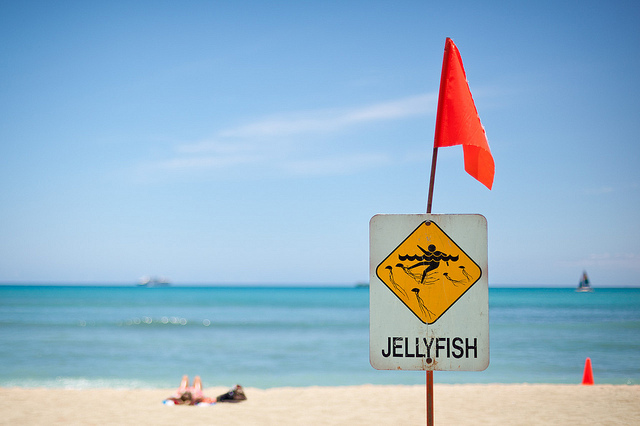Facts
Venom:
Scientists have studied the venom of
Chironex fleckeri for decades trying to figure
out its chemical structure and main components to
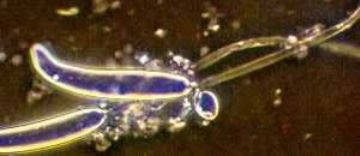 determine why it is so deadly. After years of research,
no definite chemical structure has been discovered.
However, through these studies, much knowledge has come
to our attention about this venom and treating patients
that have encountered it. Two toxins have been
completely identified on the Chironex fleckeri
venom. These toxins are CfTX-1 and CfTX-2. These
proteins are only found in Cnidarians and are particular
in the envenoming process of all jellyfish. Studies have
also shown that a high intracapsular pressure of the
nematocyst is what causes such a rapid fire of these
deadly structures.
determine why it is so deadly. After years of research,
no definite chemical structure has been discovered.
However, through these studies, much knowledge has come
to our attention about this venom and treating patients
that have encountered it. Two toxins have been
completely identified on the Chironex fleckeri
venom. These toxins are CfTX-1 and CfTX-2. These
proteins are only found in Cnidarians and are particular
in the envenoming process of all jellyfish. Studies have
also shown that a high intracapsular pressure of the
nematocyst is what causes such a rapid fire of these
deadly structures.
When first stung, a victim will
experience excruciating pain, impaired consciousness,
bright red inflammation where the tentacles made
contact with the skin, and cardiac dysfunction. When,
and if, a victim is pulled from the water, there are
many things that may be required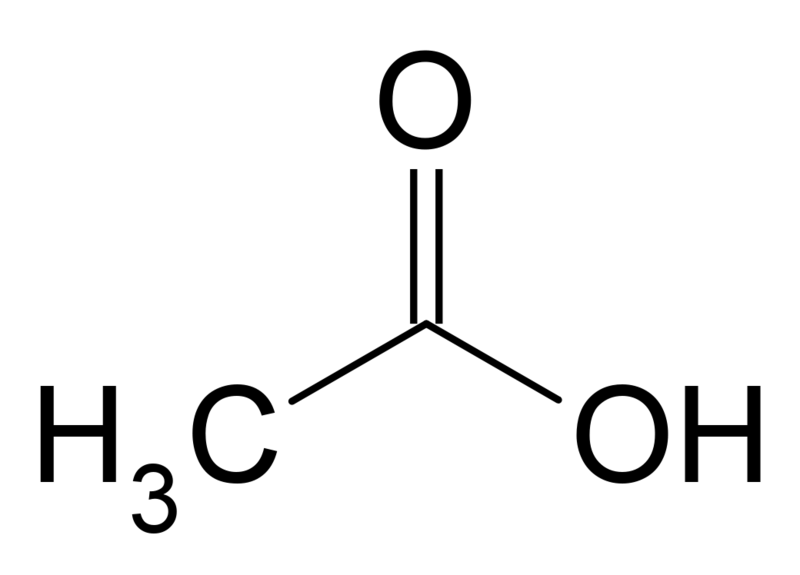 to keep them alive. The
first step to take douse the affected area with domestic
vinegar. This stops anymore nematocysts from firing more
venom into the victim. After this, the tentacles can now
be removed from the victim and they must be immediately
taken to the nearest hospital. Many times the victim
will need CPR to keep them alive. Mechanisms of the
venom are not very well understood, but a combination of
respiratory failure, paralysis of cardiac muscles, and
atrium-ventricle disturbances are found to be the major
causes of death in victims. If a victim does survive,
it's most likely due to the use of anti-venom by
doctors. This substance has been available since 1970
and is composed of purified sheep immunoglobulin. Even
though it is not used in all cases, this anti-venom has
saved the lives of many victims of Chironex fleckeri.
to keep them alive. The
first step to take douse the affected area with domestic
vinegar. This stops anymore nematocysts from firing more
venom into the victim. After this, the tentacles can now
be removed from the victim and they must be immediately
taken to the nearest hospital. Many times the victim
will need CPR to keep them alive. Mechanisms of the
venom are not very well understood, but a combination of
respiratory failure, paralysis of cardiac muscles, and
atrium-ventricle disturbances are found to be the major
causes of death in victims. If a victim does survive,
it's most likely due to the use of anti-venom by
doctors. This substance has been available since 1970
and is composed of purified sheep immunoglobulin. Even
though it is not used in all cases, this anti-venom has
saved the lives of many victims of Chironex fleckeri.
How to Protect Yourself:
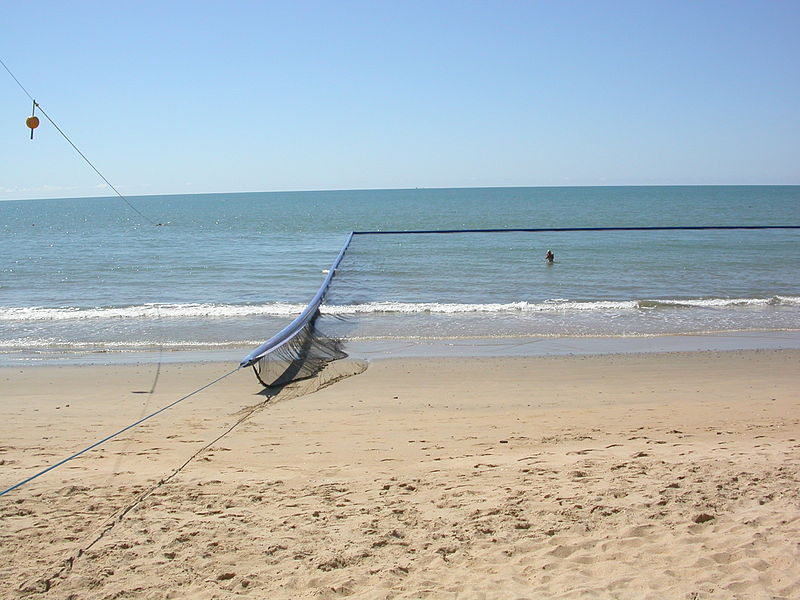 There
are many safety precautions that can be taken when
visiting the dangerous, northern coast of Australia. One
of these include swimming at a beach where a jellyfish
net is in place. Even though it cannot keep all
dangerous animals away from people swimming, it can keep
out this deadly box jellyfish. These nets are seen all
around beaches in Australia (shown left) and keep out
unwanted guests like Chironex fleckeri. If you
are not planning on staying inside these net or want to
go scuba diving or surfing, some full body wet suits can
protect you from the harmful sting of this box jellyfish
as well (demonstrated by the picture below).
There
are many safety precautions that can be taken when
visiting the dangerous, northern coast of Australia. One
of these include swimming at a beach where a jellyfish
net is in place. Even though it cannot keep all
dangerous animals away from people swimming, it can keep
out this deadly box jellyfish. These nets are seen all
around beaches in Australia (shown left) and keep out
unwanted guests like Chironex fleckeri. If you
are not planning on staying inside these net or want to
go scuba diving or surfing, some full body wet suits can
protect you from the harmful sting of this box jellyfish
as well (demonstrated by the picture below).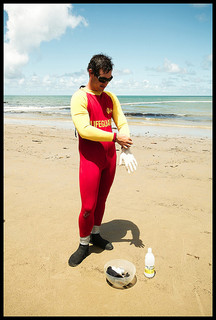
Other Interesting Facts:
Did you know that urinating on a jellyfish sting does not help the victim?
Did you know that there is enough venom is one box jellyfish to kill 60 people?
Did you know that an individual of this species is only alive for 9-10 months?
Did you know that tracking devices have shown that box jellyfish 'rest' on the sea floor at night unless disturbed by predators or prey?
Did you know that the more tentacles a box jellyfish has, the older it is?
Did you know that Loxosceles reclusa is one of the most venomous spiders on the planet?
Did you know that Conus marmoreus is also a deadly creature in the ocean?
Did you know some beaches post jellyfish signs to caution swimmers about a potential risk?
Thank you for reading all about the deadly species Chironex fleckeri. You may review my References or return to the Home page!
You can also learn more about me by visiting the Contact page!

